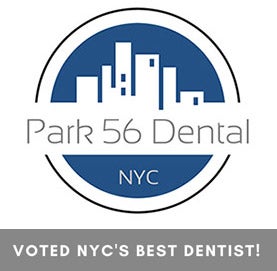How Long Does Invisalign Take to Straighten Teeth?
In the realm of orthodontic treatments, Invisalign has emerged as a highly favored alternative to traditional metal braces. Known for its clear, removable aligners, Invisalign promises a less conspicuous and more comfortable path to achieving a perfect smile. However, despite its popularity, there are numerous misconceptions about how long it actually takes to straighten teeth using this method. Many prospective patients enter treatment with unrealistic expectations about the duration and effectiveness of Invisalign, influenced by advertising, anecdotal stories, and simplified comparisons with conventional braces.
Today we will debunk some common myths surrounding the timeline of Invisalign treatment. By understanding what truly influences the duration of Invisalign treatment and setting appropriate expectations, you’ll be able to make a more informed decision about your orthodontic care.
Understanding Invisalign
Invisalign has revolutionized the field of orthodontics by offering an alternative to the traditional metal and wire braces that many find cumbersome and visually unappealing. Understanding what Invisalign is and how it functions is key to setting realistic expectations for those considering this treatment.
What is Invisalign?
Invisalign is a modern orthodontic treatment that uses a series of custom-made, clear plastic aligners to gradually move teeth into their desired position. These aligners are crafted using 3D computer imaging technology, ensuring they fit snugly over the teeth and apply the correct amount of pressure in the right places. Unlike traditional braces, Invisalign aligners are removable and virtually invisible, offering aesthetic and practical advantages, particularly for adults and teens self-conscious about their appearance.
How Does Invisalign Work?
The process begins with a digital scan of your mouth, which is used to create a precise treatment plan and project your future smile. Based on this plan, a series of aligners are produced. Each aligner is worn for about one to two weeks before being replaced by the next in the series, gradually moving the teeth towards their final position. The total number of aligners varies depending on your specific needs.
Comparison with Traditional Braces
While both Invisalign and traditional braces aim to achieve the same result—a healthier, more aligned smile—their approaches and patient experiences differ significantly:
- Appearance: Invisalign aligners are clear and less noticeable than metal braces, which makes them a popular choice for those who prefer a discreet treatment option.
- Comfort: Invisalign aligners are made from smooth plastic and are custom fitted to the teeth, reducing the likelihood of irritation commonly caused by the brackets and wires of traditional braces.
- Convenience: Since Invisalign aligners are removable, patients can eat, brush, and floss with no additional hassle, which helps maintain better oral hygiene during treatment.
- Duration of Treatment: The length of treatment with Invisalign can be comparable to that of braces but varies greatly depending on the complexity of the case and how consistently the patient wears their aligners.
How Fast Can It Go?
The duration of Invisalign treatment can vary widely due to a combination of individual and treatment-specific factors. Understanding these factors will help you form a realistic expectation of your treatment timeline.
Patient-specific Factors
- Severity of Dental Issues
- Crowding: Mild to moderate crowding can often be addressed more quickly than severe crowding, which may require more aligners and a longer treatment plan.
- Gaps: Small gaps between teeth may close faster compared to larger gaps that require more substantial movement.
- Bite Problems: Complex bite issues, such as overbites, underbites, or crossbites, may extend the duration of treatment as they often require more intricate adjustments.
- Patient Age and Physiological Responses
- Teens vs. Adults: Younger patients, particularly teenagers, may experience faster tooth movement due to their ongoing growth and development. In contrast, adults may have slower tooth movement, potentially lengthening the treatment time.
- Bone Density and Tooth Structure: Variations in bone density and the structure of teeth can influence how quickly teeth respond to the pressure applied by the aligners.
- Patient Compliance with Wearing Aligners
- Wear Time: The effectiveness of Invisalign heavily depends on patients wearing their aligners for the recommended 20-22 hours per day. Failure to adhere to this guideline can significantly prolong the treatment duration.
- Consistency: Regular, consistent wear ensures that each set of aligners can effectively move the teeth as planned, reducing the likelihood of delays or setbacks.
Treatment-specific Factors
- Customization of the Treatment Plan
- Initial Assessment: A thorough initial assessment by the orthodontist helps in creating a precise treatment plan tailored to the patient’s specific needs, which can streamline the overall treatment process.
- Technological Advancements: Use of advanced imaging and planning tools allows for more accurate predictions of treatment duration and more efficient aligner design.
- Frequency of Aligner Changes
- Standard vs. Accelerated Schedules: Some patients may follow a standard two-week aligner change schedule, while others might switch aligners more frequently, depending on their orthodontist’s recommendations and their individual progress.
- Need for Additional Refinements or Mid-Course Corrections
- Refinements: Some patients may require additional sets of aligners, known as refinements, to fine-tune their results and achieve the desired outcome. This can add time to the overall treatment duration.
- Adjustments: If teeth are not moving as expected, mid-course corrections may be necessary, which could involve modifying the current aligners or creating new ones, potentially extending the treatment time.
Common Questions About Invisalign
Is it true that Invisalign always straightens teeth faster than traditional braces?
No, this is a common misconception. The duration of Invisalign treatment varies depending on the complexity of the dental issues. While some cases may be completed faster with Invisalign, others may take a similar or even longer time compared to traditional braces. The key factors influencing the duration include the severity of the misalignment, patient compliance, and the specific treatment plan designed by the orthodontist.
Can wearing my Invisalign aligners more than the recommended 22 hours a day speed up my treatment?
Wearing aligners for more than the recommended 22 hours per day does not necessarily speed up the treatment and may not lead to faster results. The treatment plan is carefully designed to move teeth at a safe and effective pace. Over-wearing aligners beyond the recommended time does not accelerate the biological process of tooth movement and could potentially cause discomfort or other issues.
Will I see results from Invisalign treatment in the same amount of time as others?
Not necessarily. Each patient’s treatment timeline is unique and depends on various factors such as the severity of the dental issues, the specific movements required, and how diligently the patient follows the prescribed wear schedule. While some patients may complete their treatment in a few months, others with more complex cases may require a longer period to achieve the desired results.
Can I reduce the time I wear my aligners once I start seeing improvements?
No, it’s important to continue wearing your aligners as prescribed by your orthodontist, even after you begin to see visible improvements. Reducing wear time prematurely can halt progress and may lead to teeth shifting back toward their original positions, ultimately prolonging the treatment.
Are Invisalign aligners completely maintenance-free, and can I just wear them without any special care?
While Invisalign aligners are designed for convenience, they do require regular maintenance to ensure effectiveness and hygiene. Patients should clean their aligners daily, avoid eating or drinking anything other than water while wearing them, and follow their orthodontist’s instructions for care. Neglecting maintenance can lead to aligner damage or oral hygiene issues, potentially extending the treatment duration.
Can Invisalign treat all types of orthodontic issues as quickly as traditional braces?
Invisalign is effective for many orthodontic issues, including mild to moderate crowding, gaps, and certain bite problems. However, for very complex cases, traditional braces may sometimes be a more effective option, potentially offering a quicker path to correction. It’s important to consult with an orthodontist to determine the most appropriate treatment for your specific needs.
Call Park 56 Dental
Transform your smile with Invisalign at Park 56 Dental. Our skilled team offers personalized Invisalign treatment, delivering quality dental care since 1997 to Midtown, Central Park, Upper East Side, Park Avenue, and surrounding Manhattan areas. Whether you’re exploring orthodontic options or seeking a more convenient solution, we are here to assist you every step of the way. Contact us to learn how Invisalign can provide the smile you desire without the hassle of traditional braces. Schedule your free consultation today and discover how Invisalign can fit into your lifestyle, helping you achieve a beautiful, straight smile with confidence.
RECENT POSTS
categories
- Uncategorized
- Cosmetic Dentistry
- Veneers
- Healthier Teeth
- Teeth Whitening
- Dental Health
- Video
- Dental Emergencies
- Invisalign
- Dental Implants
- Root Canal
- Sedation Dentistry
- Infographic
- Dental Crowns and Bridges
- Dental Anxiety
- Gum Disease
- COVID-19
- Bad Breath
- New York Dentist
- Cut out sugar
- General Dentistry
- Oral Health
- Oral Cancer
- Dry Mouth
- Gum Health
- Toothache
- Dental Sealants
- Cavities
